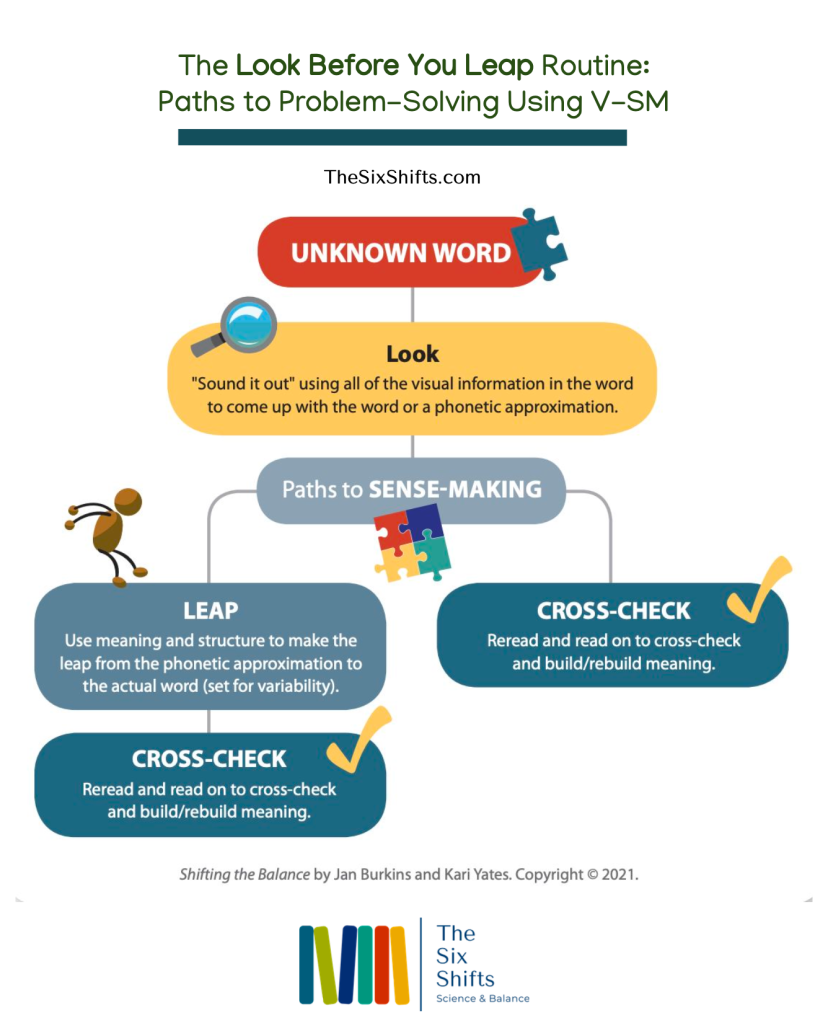You may have been hearing the term set for variability being used lately. It is a term often talked about within the science of reading movement. Research discussing Set for variability has been out for a while.
Set for variability refers to the ability to take an approximation error of a word and fix it into the correct word. Some are now labeling it as a strategy to help solve irregular words. It is more of a process readers must be able to perform. For Set for variability to be successful, a child must have phonemic awareness, and letter-sound knowledge, be able to decode and blend, and have a representation of the target word in her oral vocabulary (see Elbro, de Jong, Houter, D., & Nielsen, 2012).

It also requires self-monitoring skills. Readers must be willing to do some self-teaching and take a leap, trying out the word in a slightly different way.
It involves the manipulation of sounds, adjusting the mispronunciation into a word they have heard that makes sense of the sentence. Notice how making meaning never goes away. Our brains naturally try to find meaning.
Be aware that too much phonics and exposure to 100% decodable books will not allow students to use the process of Set for variability. Readers have to be exposed to words they cannot sound out early on. Not just High-Frequency words either. They must learn to play around with sounds in words and change mispronunciations into meaningful words.
Here are a few helpful ideas to set your students up to learn this process.
As teachers, we have to coach kids into listening and switching the sound they say to something that gives the word meaning and sounds like a word they know and have heard
- We can use phrases like “What else could it be” (Marnie Ginsberg)
- Try it again
- In their book Shifting the Balance, Burkins & Yates created a charge to help us teach kids to be flexible. I have provided a snapshot of it.

- Help students use it with irregularly spelled High-Frequency words.
Words like: what, saw, was
I see 1st-grade readers try sounding out the word “what” all the time and then self-correcting after a brief pause, an example of students using Set for variability.
I recently worked with a struggling 3rd grader who got stuck on the word “tube.” First, he decoded it perfectly, but with a short u sound. I asked him to try again and pointed to the e. He perfectly sounded it out again with the u saying its name. The long u sound is tricky, however, and it often does not perfectly say its name. I had to help him work through this. He was frustrated because he was following the rules he had been taught, and it was not working. I helped him use meaning and structure to make a leap to the correctly pronounced word.
A short a sound is often tricky for kids first learning short vowels. Think about the words am, ran, etc. The short a sound is not always pure.
So, teach students to first read with their eyes and say all the sounds in the word. If incorrect and their decoding attempt was phonetically accurate, have them use the sense-making processes we are more familiar with. They can cross-check the approximation they said with known words and for meaning.
Troy